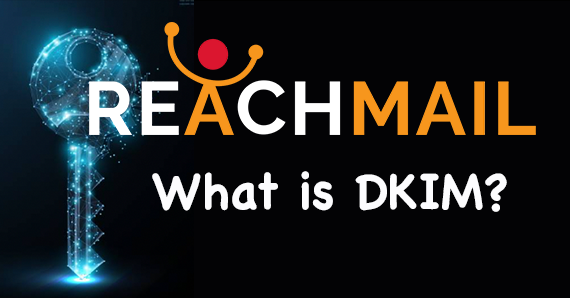
What is DKIM? “km6CkeWuPf4AuCeM4JW1j6682X+0eA/vc8YkSso0lN7M7I” to us is gibberish, but to a mailbox provider, it is a sign that demonstrates your email has not been tampered with in transit along with your authority to use this sending domain. DKIM (Domain Keys Identified Mail) is one small layer in helping your emails appear secure. DKIM alone will not prevent email spoofing but will demonstrate your integrity as a sender. The best way to not end up in the spam/junk folders is to be better than a spammer in every way.
What is DKIM?
A DKIM record is a specially formatted DNS TXT record. DKIM signing is on by default in ReachMail. Therefore, all messages will sign with DKIM Keys automatically. We do encourage those with a custom domain to create their own custom DKIM signature. This will be specific to their domain. The more secure you can be about your sending domain, the less likely you will fall into trouble with spoofing/phishing attacks.
ReachMail has a Domain Authentication tool that will help create this record.
What is DKIM not?
DKIM is not required to send mail. DKIM makes it less likely that you will end up in spam/junk folders. DKIM alone will NOT prevent those, but DKIM is a piece of that protection of your emails. DKIM also doesn’t prevent these attacks from “look-alike” domains. As your domain is “company.com,” DKIM does not prevent someone from using “company.net or company.org” from attempting to use your message. DKIM also does NOT encrypt your emails; it is an encrypted signature that shows your message came from you.
DKIM and SPF
SPF (Sender Policy Framework) is another part of domain authentication. Coupled with DKIM, you are protecting your brand reputation and domain from bad actors. SPF allows email senders to define which IP addresses are allowed to send mail for a particular domain. DKIM, on the other hand, provides an encryption key and digital signature that verifies that an email message was not forged or altered. Domain authentication is part of our best practices to give you the best deliverability possible.
DKIM Resources
- DKIM Organization - This is for the group that has developed the DKIM standards. They have how-tos and other related articles to DKIM
- DKIM for your Grandmother INFOGRAPHIC - A fun infographic that explains the basic concepts of DKIM.
- DKIM Technical - This guide has a graphic that explains the more technical details of DKIM

